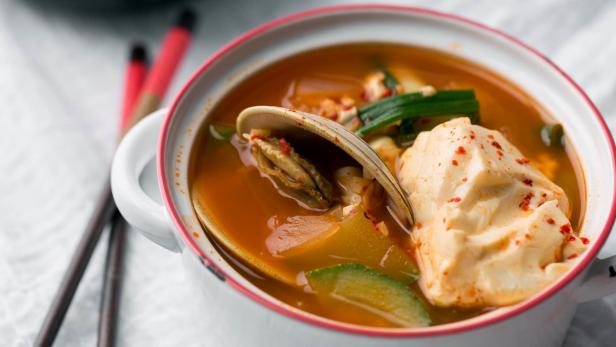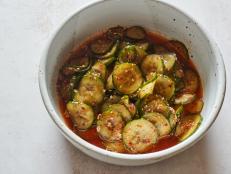Dashi Is Your Key to a Host of Cozy Soups and Stews
The umami-powerhouse of a stock only requires three ingredients.


Get a Premium Subscription to the Food Network Kitchen App
Download Food Network Kitchen to sign up and get access to live and on-demand cooking classes, in-app grocery ordering, meal planning, an organized place to save all your recipes and much more.
In this series, we're showing off some of the coolest recipes, tips and tricks we've learned from chefs in the all-new Food Network Kitchen app.
—
With soup and stew season well on its way, mastering dashi, a stock that originates from Japan, should be at the top of your to-do list. The clear, flavorful stock can serve as a base for a vast array of dishes, from miso soup to New England clam chowder to haemul sundubu jjigae (Seafood Soft Tofu Stew). If it’s a soup with flavors from the sea – clams, shrimp, seaweed – dashi can help those ingredients shine.
Dashi refers to a family of stocks, so there are a few ways to make it. But in Hooni Kim’s class on the Food Network Kitchen app, he uses just three ingredients to make his version – kombu (a type of seaweed), dried anchovies and dried shiitake mushrooms. After soaking the ingredients in a pot of water for 12 hours, all you need to do is simmer the pot for about 80 to 90 minutes. And with a little patience, the stock comes together seamlessly.
Hooni explains that while the stock on its own is slightly sweet, but generally pretty flavorless, when used in place of water, it gives seafood-based dishes, especially stews, a strong foundation. “You can taste the seafood in the broth a lot longer when you cook it with the dashi.”

Dashi can also change a dish’s pH level, which is critical for soups and stews. “Water tends to be a little acidic, because we have all these chemicals killing all the germs. And that’s not great for soups and stews, where we’re trying to take flavor from the ingredients into the broth.”
Adding dashi to a soup helps neutralize its pH level, so it becomes more basic. And in doing so, the soup becomes more flavorful and brings a “very smooth, soft, silky texture.”
All in all, dashi can be the base that holds a whole dish together.
See for yourself how easy it is to make fresh, homemade dashi in Hooni’s 6-minute class.
Related Content:


































